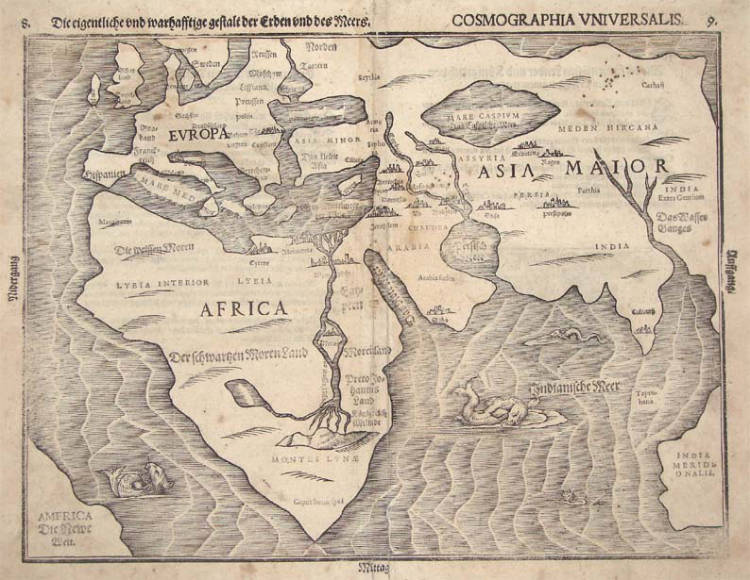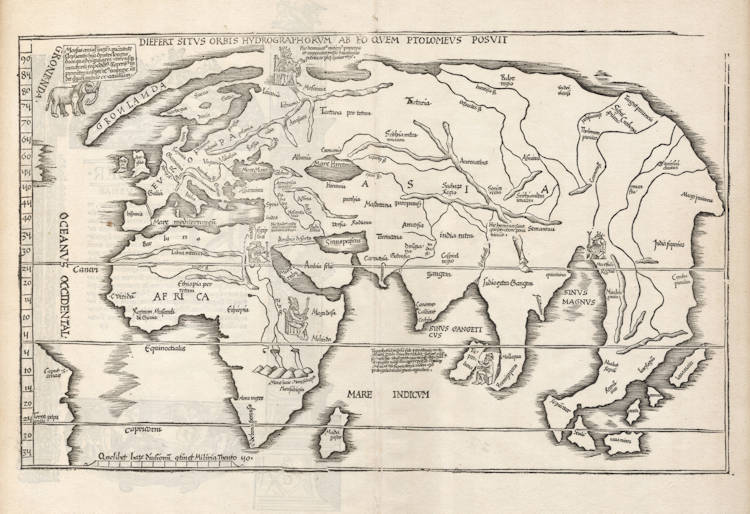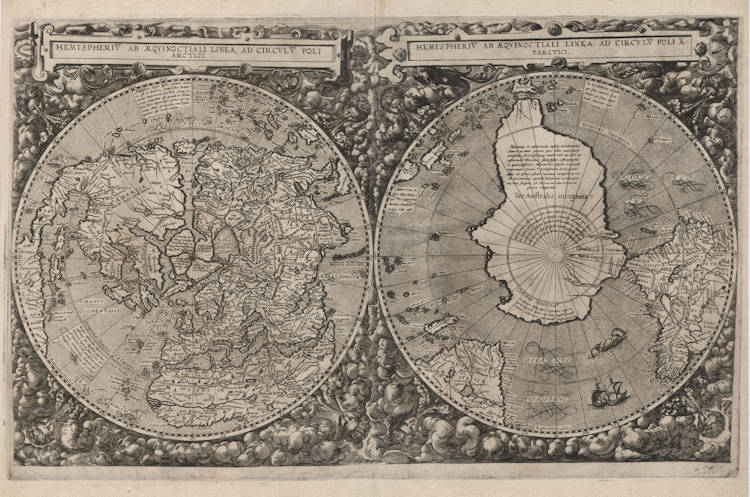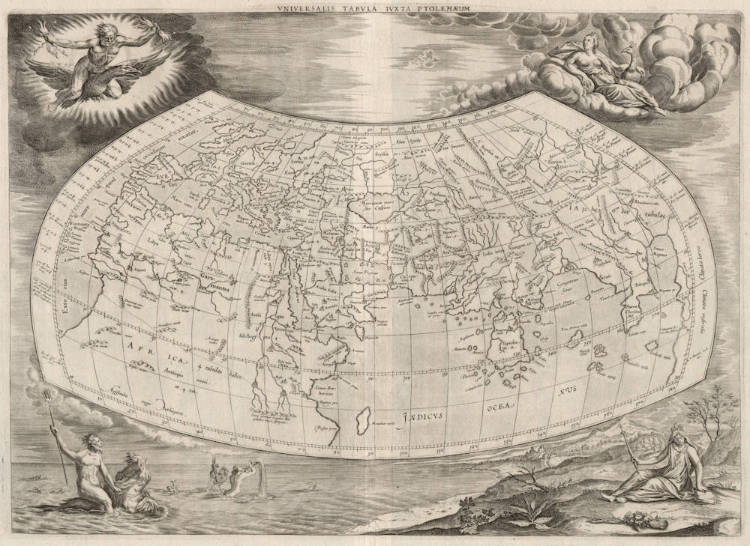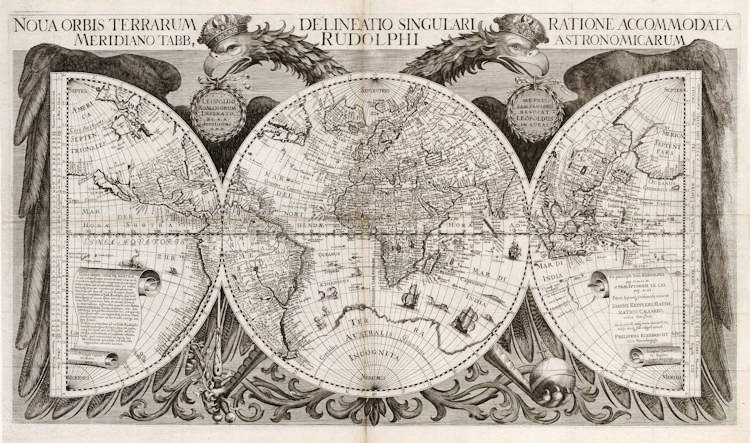Leen Helmink Antique Maps
Old Master Print of an Armillary Sphere with wind heads by Albrecht Dürer
The item below has been sold, but if you enter your email address we will notify you in case we have another example that is not yet listed or as soon as we receive another example.
Stock number: 19042
Zoom ImageDescription
From the 1525 first edition first state of this print (the earlier 1522 edition of the book has a different armillary sphere print, also by Dürer). The woodcut decorations on the back of the pages are also attributed to Albrecht Dürer.
Note that the later 1535 and 1541 editions of the Fries atlas contain this same print but in a different state.
Condition
Strong and early imprint of the woodblock. Margin on the left short as is common with this print. Excellent collector's condition.
Albrecht Dürer famous print of an armillary sphere
Decorative woodcut by the grand master of woodcut master prints.
Armillary spheres are among the oldest astronomical instruments in the world. The Greek astronomer Hipparchus (190–120 BC) credits Eratosthenes (276–194 BC) as the inventor. Some sources credit Greek philosopher Anaximander of Miletus (611-547 BC) with inventing the armillary sphere. It was invented independently in ancient China. They were used to visualize, teach and predict the positions of the heavenly bodies. Before the invention of the telescope in the 17th century, the armillary sphere was the prime instrument of all astronomers in determining celestial positions.
The early models, with the Earth as center, are known as Ptolemaic. The later models, with the Sun as center, are known as Copernican.
Armillary sphere
Early astronomical device for representing the great circles of the heavens, including in the most elaborate instruments the horizon, meridian, Equator, tropics, polar circles, and an ecliptic hoop. The sphere is a skeleton celestial globe, with circles divided into degrees for angular measurement. In the 17th and 18th centuries such models—either suspended, rested on a stand, or affixed to a handle—were used to show the difference between the Ptolemaic theory of a central Earth and the Copernican theory of a central Sun.
The earliest known complete armillary sphere with nine circles is believed to have been the meteōroskopion of the Alexandrine Greeks (c. ad 140), but earlier and simpler types of ring instruments were also in general use. Ptolemy, in the Almagest, enumerates at least three. It is stated that Hipparchus used a sphere of four rings; and in Ptolemy’s instrument, the astrolabon, there were diametrically disposed tubes upon the graduated circles, the instrument being kept vertical by a plumb line.
(Brittanica)
The Complete Works of Albrecht Dürer
"Dürer's authorship is proved by two letters of the mathematician and architect of Karl V, Johann Tscherte, who plainly mentions Dürer's name as the designer of the Armillary Sphere."
(Kurth).
References
Wilhelm Kurth, The Complete Works of Albrecht Dürer, 333.
Hollstein, Durer 262.
Laurent Fries (c.1490-c.1532)
Laurent Fries (Laurentius Frisius), born in Mulhouse in Burgundy, travelled widely, studying as a physician and mathematician in Vienne, Padua, Montpellier and Colmar before settling in Strassburg. There he is first heard of working as a draughtsman on Peter Apian's highly decorative cordiform World Map, published in 1520. Apian’s map was based on Waldseemüller's map of 1507 which no doubt inspired Fries's interest in the Waldseemüller Ptolemy atlases of 1513 and 1520 and brought him into contact with the publisher, Johannes Grüninger. It is thought that Grüninger had acquired the woodcuts of the 1520 edition with the intention of producing a new version to be edited by Fries. Under his direction the maps were redrawn and although many of them were unchanged, except for size, others were embellished with historical notes and figures, legends and the occasional sea monster. Three new maps were added.
There were four editions of Fries' reduced sized re-issue of Waldseemüller's Ptolemy atlas:
1522 Strassburg: 50 woodcut maps, reduced in size, revised by Laurent Fries (Laurentius Frisius) and included the earliest map showing the name ‘America' which is likely to be available to collectors
1525 Strassburg: re-issue of 1522 maps
1535 Lyon: re-issue of 1522 maps, edited by Michael Servetus who was subsequently tried for heresy and burned at the stake in 1553, ostensibly because of derogatory comments in the atlas about the Holy Land – the fact that the notes in question had not even been written by Servetus, but were copied from earlier editions, left his Calvinist persecutors unmoved
1541 Vienne (Dauphiné): re-issue of the Lyon edition - the offensive comments about the Holy Land have been deleted
(Moreland and Bannister)
Related Categories
Related Items

